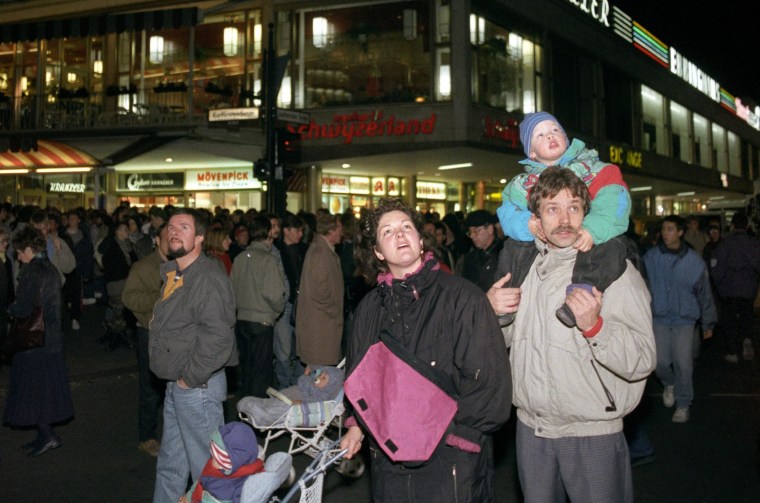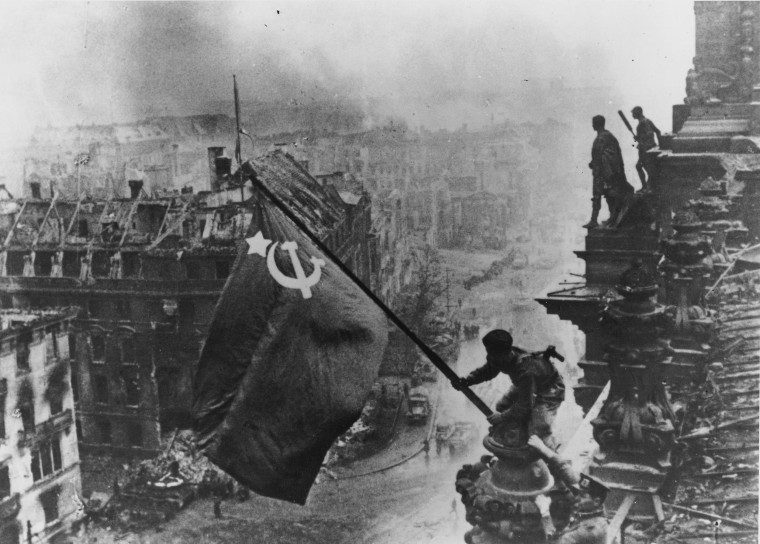It was simply the greatest news story I ever covered, so momentous that the events of those cold days in November 1989 deserve to be capitalized: The Fall Of The Berlin Wall.
It was one of the two events in my career when the world seemed to wobble on its axis, the 9/11 attacks being the other. Coincidentally, the wall fell on 11/9, the ninth day of the eleventh month.
One signaled the end of the Cold War between the West and the Soviet Union, the other the beginning of a new era of global terror. Both were sudden and shocking.
Everything about the fall of the Berlin Wall was huge. The wall itself seemed immovable, a terrifying scar across a city divided between a pro-American West and a communist East. It was the line between nuclear enemies.
It looked impregnable; the watchtowers and guards, the mines and moats, the dead ground and the hundreds of dead who had tried to breach it. But it wasn’t. The political barrier — thrown up overnight on Aug. 13, 1961 — also fell in one night.
For those of us who grew up with the threat of nuclear annihilation, of “mutually assured destruction,” Berlin was the center of the fear and the conflict.
East German spokesman Gunter Schabowski, improvising at a late-night news conference, confirmed that new rules allowing citizens to emigrate to the West applied immediately.
Still, the communist regime had no intention of opening the wall. But seven minutes after Schabowski answered the first question, he could not answer the obvious one: “What happens to the wall now?”
East Germans took the initiative and flocked to the crossing points in their thousands. The guards faced a choice: open fire or open the gates. They had no orders to shoot, so they let the people through. The wall was history, and so was East Germany.
The speed of events took leaders, and news organizations, by surprise. Early the next morning I flew in to West Berlin to find crowds on the wall; some had been there all night.
I climbed up, too. Then my cameraman suggested I jump down onto the eastern side. I did. Twenty-four hours earlier, I might have been shot for doing such a thing. It felt surreal; the crowds cheered me and a few did the same thing, jumping down to dance near the Brandenburg Gate.

Emotions were raw. There tears of astonishment amid the unbridled joy. West Berliners handed bananas to eastern neighbors who had never eaten the fruit. Crowds gathered outside stores, six deep, just to gaze at the goods displayed in the windows.
And all the while, the tap-tapping of hundreds of hammers chipped away the hated wall, piece by piece.
Early the next morning — a Sunday — we went to a different section of the wall where West Germans had fixed chains to the structure and were pulling it with all their might. East German border guards peered through as a crack began to appear. The younger ones smiled.
I knew history was unfolding before my eyes. The wall was, finally, coming down.
The East Germans tried in vain to deter the West Germans with fire hoses. In return, the crowd opened bottles of champagne and sprayed it at the guards. The wall was falling and the East German guards knew they could not stop it.
Later, I asked the Mayor of West Berlin Walter Momper what he thought it all meant. “The two Germanys will be one again,” he said.
I was stunned by his reply. Amid the euphoria, it had escaped me that this meant the reunification of Germany.
Events were moving at lightning speed. Within two weeks, the West German Chancellor Helmut Kohl, who had refused to believe the aide who told him what was happening on the night of Nov. 9, set out his ten-point plan for German unity.
Every day there were sights and encounters to take your breath away.
At the Reichstag I met a man carrying an old Soviet flag. Not just any flag, he said, it was the one that Soviet troops planted atop what is now Germany’s parliament as they took East Berlin in 1945.
The photograph of that moment is one of the most famous of the war. And this was the flag. He had the proof. Then the man cried.

The roads were littered with Trabant cars, the state-sanctioned vehicle and pride of wealthy Easterners. Many had broken down. East Germans were taking their chance to escape the prison their country had become. The most poignant place in the city was close to the Brandenburg Gate where dozens of simple wooden crosses commemorated the many who died trying to cross the wall, the last just eight months earlier.
After 10 days I left Berlin, taking with me a small piece of the wall I’d picked up on the first day.
Within months, I was in the Soviet Union as tremors from the earthquake that brought down the Berlin Wall rippled out to Moscow. I watched Mikhail Gorbachev argue on the streets of rebellious Lithuania that people there should stick with Soviet rule. His please were disregarded.
I saw war break out between two Soviet republics, Armenia and Azerbaijan.
Cracks appeared all over the Soviet Union. It fell more slowly than the wall, but its demise was just a emphatic.
For those who grew up with the threat of nuclear annihilation, of “mutually assured destruction,” Berlin was the center of the fear. The fall of the wall felt miraculous; it still does.